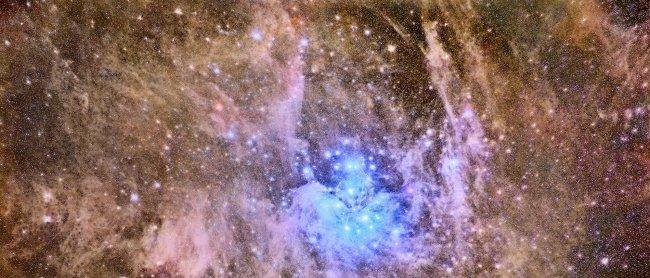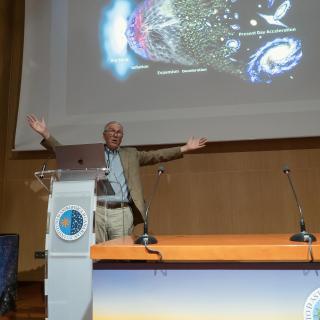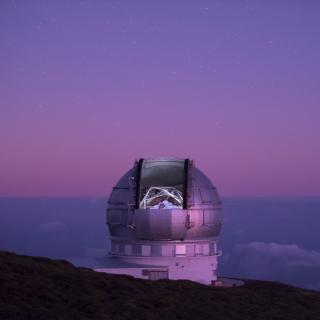Pleiades (M45) is an open star cluster containing hot stars of spectral type B, located in the constellation Taurus. It is among one of the star clusters closest to the Earth, and is the cluster best visible to the naked eye in the night sky. The Pleiades harbor a prominent place in ancient mythology, as well as a diversity of meanings in different cultures and traditions. The cluster is dominated by extremely blue and luminous hot stars that have formed in the last 100 million years. The dust that forms a faint nebulosity of reflection around the brightest stars was thought in a principle that came from a disintegration of the own formation of the cluster, but now knows that it is a cloud of unrelated dust, through which stars are currently passing. Computer simulations have shown that the Pleiades were probably formed from a compact configuration resembling the Orion Nebula. It is estimated that the group will survive for another 250 million years, after which it will disperse due to gravitational interactions with its galactic neighborhood.
On the lower left part of the image, the PanSTARRS comet is showed. I was discovered on January 21st 2016 during a programme which scans the sky for asteroids and comets using Panstarrs (Panoramic Survey Telescope and Rapid Response System, on Hawaii, USA). It was first catalogued as an asteroid. It was the Russian astronomer Denis Denisenko who realized that the orbit of PanSTARRS was similar to that of comet 252P/Linear discovered in the year 2000. PanSTARRS stopped being an asteroid and became a comet with a companion.A comet is an object within our Solar System composed mainly of ice and dust, so that they have been nicknamed “dirty snowballs”. Comets move around the Sun on very elongated, normally elliptical, orbits, with periods (the time they take to go once around an orbit) which range from a few years to hundreds of thousands of years.When they reach the point in their orbit nearest to the Sun (perihelion) the heat melts the ices of the comets, which emit gas and dust particles that form a tail, or tails of the comet. The tails can be more than a million kilometres long.
More information:
https://apod.nasa.gov/apod/ap171114.html



